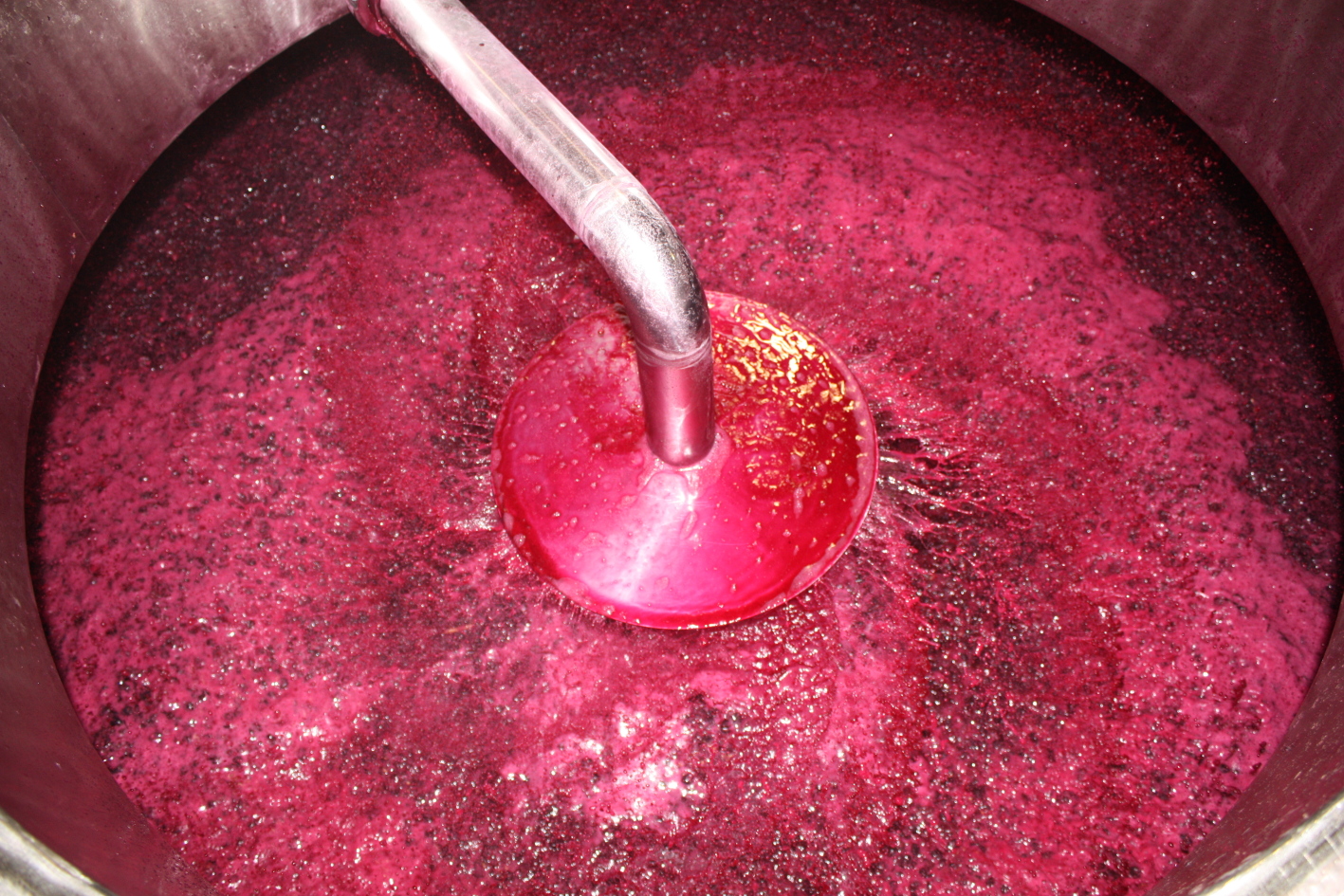Right now, we are in one of the most beautiful and typical seasons of the year: the middle of autumn, which means that the wineries here are all in action harvesting the tintos. At Bodega Classica in San Vicente, where we also recorded new material for Vinopedia.tv several days ago, the tanks are filled with must and grapes, getting ready to turn into great red wines.

Remontage of a tank
My return home is ahead and I thought it was a good idea to give you some information about how the harvest is going in Germany, also in contrast to Spain.
The first distinction one finds: Compared to spanish measures, the total vineyard area of Germany seems tiny – whereas Spain has an area of 1.000.000 hectares planted with vines, Germany´s surface of vineyards is 100.000 hectares (the area of the DOCa Rioja by itself already impresses with almost 65.000 hectares).
Obviously, due to lower temperatures and other wine-styles, a big difference is the starting point of the harvest – this year in Germany, the main harvest, as we call it, started around the 15th September (so more than two weeks later than at Castillo Maetierra, where we started with Moscatel de Grano Menudo).
Germany began with the earlier white varieties (like Müller-Thurgau, Ortega or Bacchus) for fresh, light, fruit-driven wines and will continue until the end of October for the very high-quality Riesling wines and the reds (most importantly Pinot Noir).
Naturally, we have less average hours of sunshine per year (between 1500 and 1900 in Germany, about 3000 in Spain). This, together with the aforementioned lower temperatures, leads to different types of red wines, often a little lighter in colour, with less alcohol, but great delicacy and finesse.
Furthermore, we tend to harvest more by hand in order to select already in the vineyard and contrary to here (Valles de Sadacia), we don´t harvest during the night.

Viña en Baden (cerca de Heidelberg, sur de Alemania) y viña en Valles de Sadacia (La Rioja)
Those two pictures above show vineyards in Germany (in the Baden region in this case) and near Calahorra (the one with the grape harvester).
The vegetative cycle this year throughout Germany showed lots of variations. Cool temperatures during the vine´s flowering caused a smaller amount of fruit and therefore looser berry-clusters, which is actually a beneficial thing.
During hot June and July, the grapes could grow very well. Unfortunately, in the wine growing region close to my home (the Pfalz), we had a thunderstorm with heavy hail in this period. A relatively cold August with a lot of rain presented more problems and viticultors had to watch closely for fungal diseases in the vineyards and remove infected grapes. The consequence of this events: a very small harvest in terms of quantity (ca. 7 million hectolitres), a slightly higher level of acidity, but good qualities concerning must weight.
Let´s hope for some more weeks of sunny, dry weather conditions and careful work to obtain appealing wines for 2010 in the spirit of the great 2009 vintage.
Un abrazo!

 Español
Español




